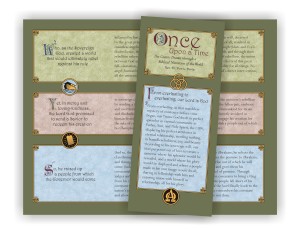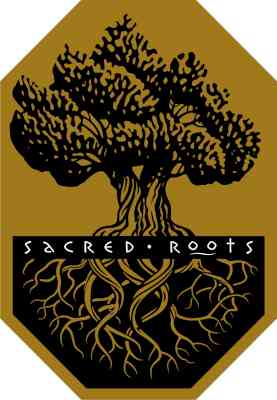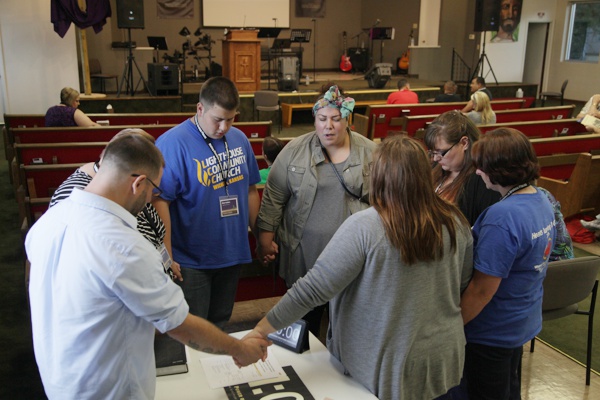Look for special resources and events TUMI will make available which are associated with our search for the Church's Sacred Roots. We invite you to join us as we seek to make the urban church more aware of and transformed by the Great Tradition and its Christus Victor motif!
Sacred Roots: Urban Christians Retrieving the Great Tradition
Read carefully TUMI’s commitment to helping urban churches rediscover and reappropriate the Great Tradition through a rethinking of our Sacred Roots. Explore with us new ways in which this tradition may renew evangelical faith and mission in the cities among the poor.
The Call to an Ancient Evangelical Future
Today, as in the ancient era, the Church is confronted by a host of master narratives that contradict and compete with the gospel. The pressing question is: who gets to narrate the world? The Call to an Ancient Evangelical Future challenges Evangelical Christians to restore the priority of the divinely inspired biblical story of God's acts in history.
Of Whose Spirit Are We? A Primer on Why We Seek to Retrieve the Great Tradition for the City Church
Today, the contemporary evangelical church finds itself situated in an age of postmodernism, civil religion, hedonism, pragmatism, and egocentrism, all of which (to some degree) have influenced the worship and service of the body of Christ. These challenges call for a new discovery and reappropriation of the faith once for all delivered to the people of God. To meet these threats and to take advantage of our present opportunities, we must be transformed by the faith once for all delivered to the saints. Read more on how we can begin!
The Importance of the Great Tradition for A Vital Shared Spirituality: A Safe, Easy Way to Renew Urban Churches
Vital healthy church planting movements among the poor assumes a richness in spiritual formation, a depth of faith in the Lord Jesus Christ, and an authentic love for all the saints. The key, therefore, to urban church renewal is finding ways for believers in community to discover and retrieve both the content and the expression of our one true faith, rooted in the apostles' doctrine and tradition. This graphic highlights the various dimensions of such a dynamic and enriching spirituality, one which balances personal piety with humble service, that emphasizes the Word and the Lord's Supper, that incorporates new Christians in a community focused on the life and mission of Jesus Christ. Renewal emerges from our commitment to live the Christ-life in community, in the power of the Holy Spirit, to the glory of God. For those interested in building a confession, spirituality, and mission based on a retrieval of the Great Tradition, these documents can show you where to start!
The Purpose, Elements, and Advantages of Shared Spirituality argues how we can be transformed and renewed by a rediscovery of the power of the Great Tradition, i.e., that faith and practice from the time of Christ and the apostles to the fifth century. Sowing Good Seed: First Steps in Recapturing the Great Tradition in Shared Spirituality offers practical, easy-to-apply steps for individuals, groups, and congregations to learn how to keep “the main thing the main thing” in spiritual growth and missional outreach.
The Revised Common Lectionary
The lectionary is a Bible reading program drafted specifically in order to help congregations who participate read through the major sections and stories of the Scriptures over a three year period. The Years A, B, and C refer to the Gospel readings according to the evangelists, Year A referring to Matthew, Year B to Mark, and Year C to Luke’s Gospel. During these separate years the Gospel readings will coincide with these books. The practice of reading the Scriptures in public worship services dates back from ancient practices in the early Church.
Bibliography
For a concise yet meaty bibliography on the early church and the Great Tradition.

 We affirm that the revelations of Scripture and the apostolic witness the Church has believed and defended are indeed sacred, not in a hokey or oddball sense, but fundamentally as testimonies of God's acts in Jesus Christ. That is, these roots are sacred because Christianity is at its core a historical revelation: God has spoken to us in history, culuminating in Jesus Christ. Only in the faithful acts of the covenant-making and keeping God of the Scriptures do we come to know God’s story of love in Christ, and by faith in him, we make that story (his-story) our own. These acts and the testimony concerning them, these roots, when retrieved and embraced, can renew and refresh all branches of urban spirituality and mission. Contemporary urban church worship, discipleship, and mission can be enriched and transformed as it reestablishes the wisdom embodied in the ancient Church’s theology, liturgy, and mission.
We affirm that the revelations of Scripture and the apostolic witness the Church has believed and defended are indeed sacred, not in a hokey or oddball sense, but fundamentally as testimonies of God's acts in Jesus Christ. That is, these roots are sacred because Christianity is at its core a historical revelation: God has spoken to us in history, culuminating in Jesus Christ. Only in the faithful acts of the covenant-making and keeping God of the Scriptures do we come to know God’s story of love in Christ, and by faith in him, we make that story (his-story) our own. These acts and the testimony concerning them, these roots, when retrieved and embraced, can renew and refresh all branches of urban spirituality and mission. Contemporary urban church worship, discipleship, and mission can be enriched and transformed as it reestablishes the wisdom embodied in the ancient Church’s theology, liturgy, and mission.